Toshiba And Marvell Unveil Modules For Project Ara

Today, Google held its second Developer Conference for Project Ara, where it unveiled many more technical details about the Spiral 2 platform and some details about the progress it's making for Spiral 3.
At the conference, two of Google's Ara partners, Toshiba and Marvell, made a few announcements of their own. The two companies unveiled their own modules that are available for Spiral 2 hardware platform, and they also talked about their next-generation Ara modules.
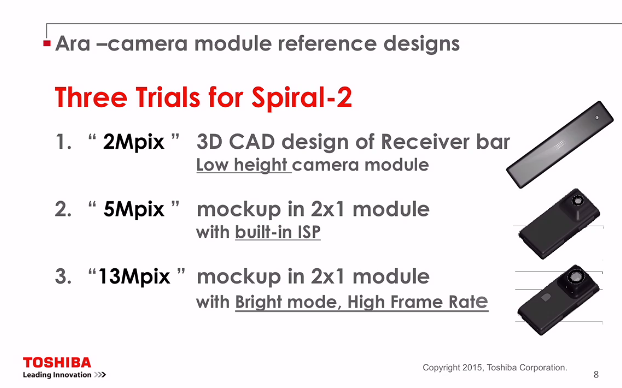
Toshiba announced three camera modules for Spiral 2. One will be 2MP and will be integrated in the top "media bar" module in the front of the phone, while the 5MP and 13MP modules will be available for the back of the phone. The 5MP module is already available for developers and OEMs, while the 13MP one should be available later this year. The 13MP camera module also supports ultra-high-frame rate up to 900 fps with a QVGA resolution (320 x 240), and up to 240 fps with a 1080p resolution.
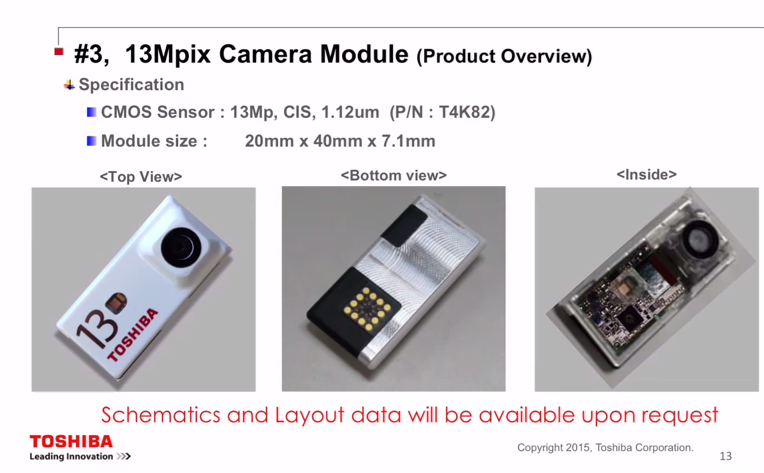
Presumably, the high frame rate could be useful for certain research projects. One of the nice things about Project Ara is that we could see all sorts of modules being developed for it that take Ara far beyond what a simple smartphone can do. Just like we see third party apps do things well beyond the default functionality of a phone, we could see third party hardware modules work in the same way, even if only a small niche of users need a certain functionality (such as a certain group of professionals).
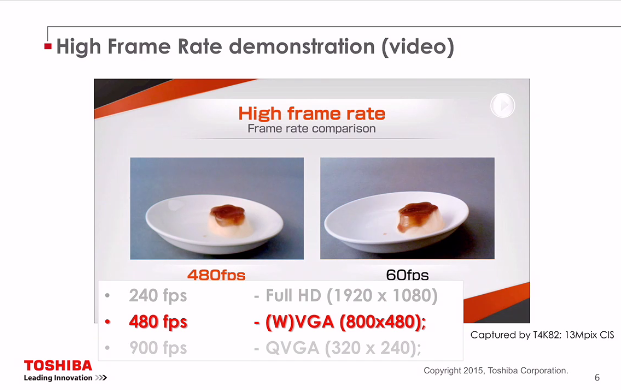
Although Toshiba's presentation was mostly focused on its camera modules today, it also announced that it will focus on building other types of modules for the Project Ara, such as Wi-Fi modules, display modules, activity measuring modules, and other wireless communication modules. Some of them will be available starting next year.
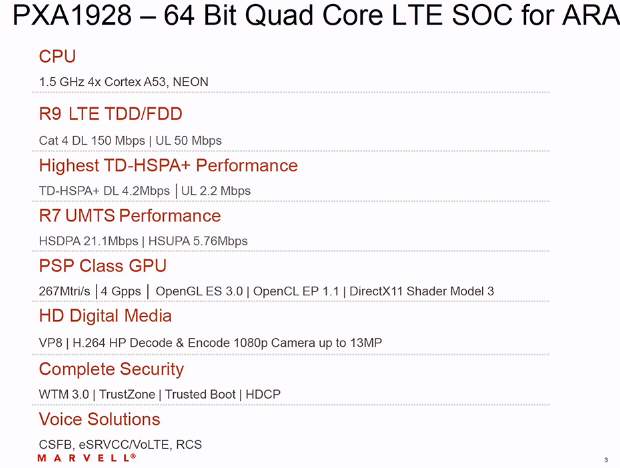
Marvell also gave a presentation at the Ara Developer Conference today, focusing mainly on its ARMv8 processors for the platform. The company already has a quad-core 1.5 GHz Cortex A53 processor available, with an OpenGL ES 3.0-capable GPU that can do 1080p video streaming at 60 fps. The chip will be called the PXA 1928 and supports Cat. 4 LTE, as well. It will be available for the Spiral 2 hardware platform.
Marvell is working on having another ARMv8 processor ready for the Ara platform, this one with an octa-core 1.5 GHz Cortex A53 CPU, called the PXA 1936.
Stay On the Cutting Edge: Get the Tom's Hardware Newsletter
Get Tom's Hardware's best news and in-depth reviews, straight to your inbox.
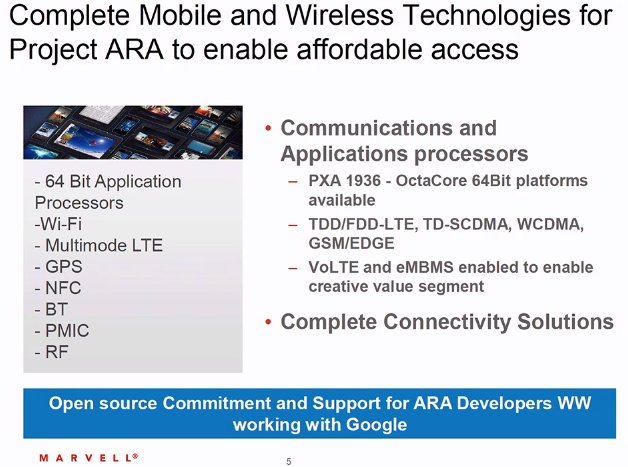
At the conference, Marvell also talked about being able to offer multiple solutions for the Ara platform in the future, much like Toshiba. The company is working on building Wi-Fi, LTE, NFC, Bluetooth and RF modules, as well.
We already know Nvidia will provide its own Tegra K1 module for Ara, so Google has at least three main partners making modules for the Ara platform. If successful (Toshiba expects sales of tens of millions of units next year), more hardware companies should become interested in building Ara modules, which will mean more options for consumers and a stronger validation of the modular phone.
Follow us @tomshardware, on Facebook and on Google+.
-
epaciga 240fps at 1080 is very nice! I love project Ara and have high hopes for it; I can envision many unique modules making phones more useful and more personal than ever.Reply -
TheForerunner7 Reply240fps at 1080 is very nice! I love project Ara and have high hopes for it; I can envision many unique modules making phones more useful and more personal than ever.
Yeah, so then iFanboy can shut up about their 240fps video recording too, lol.
